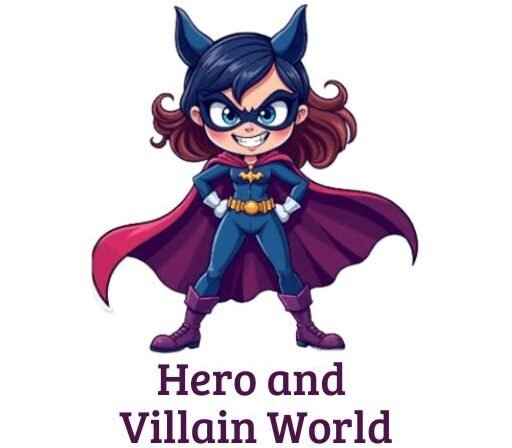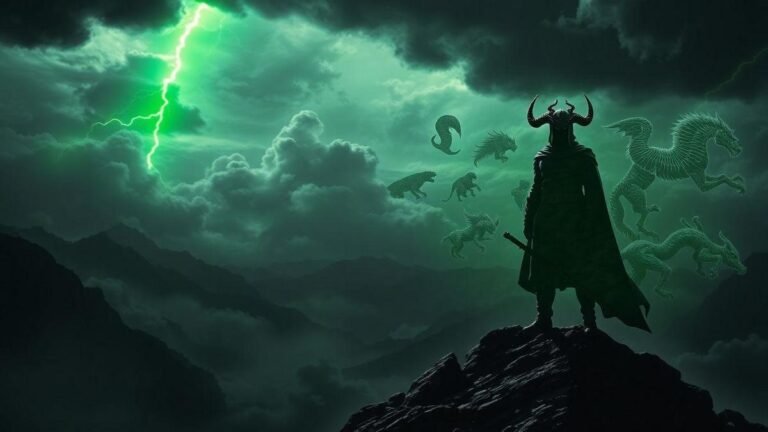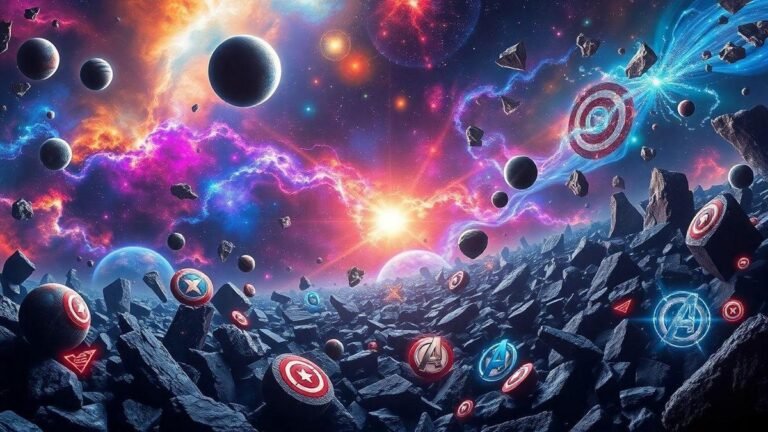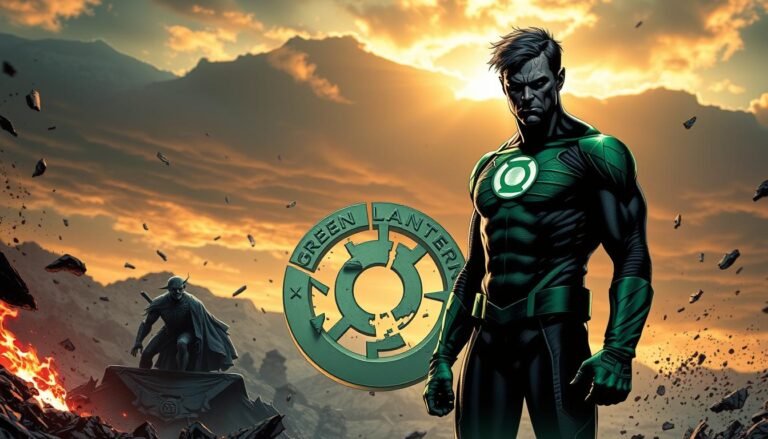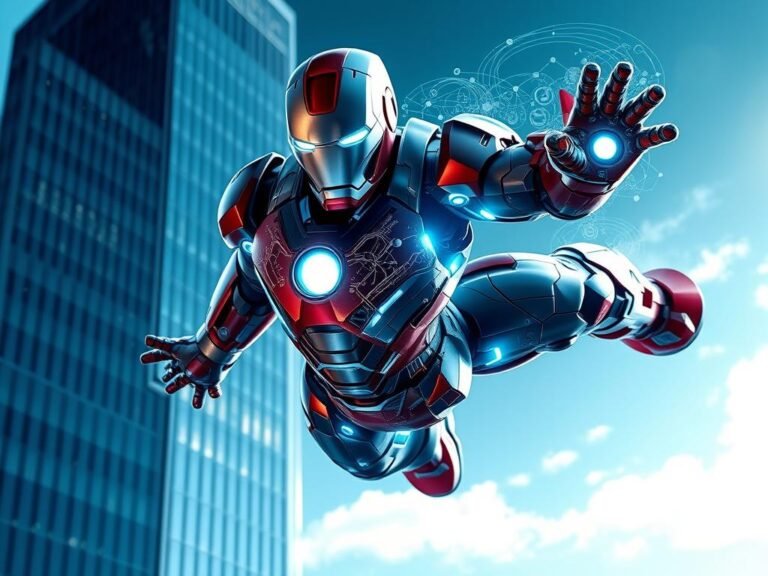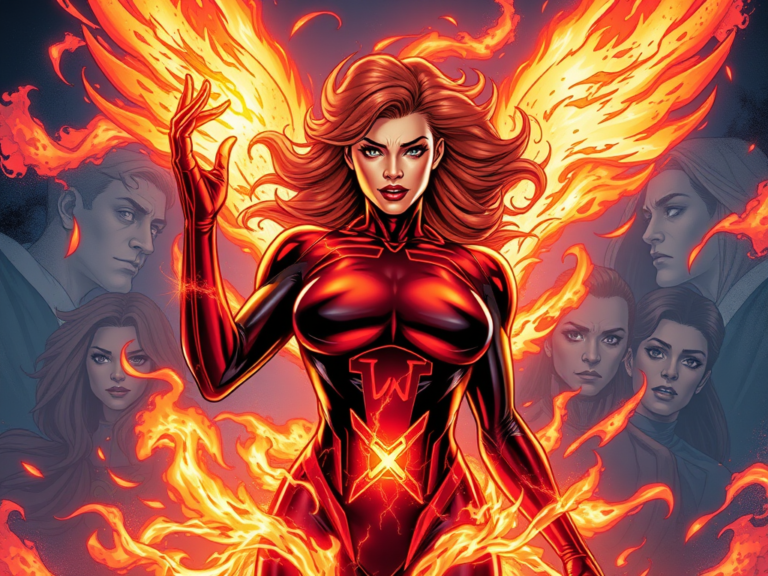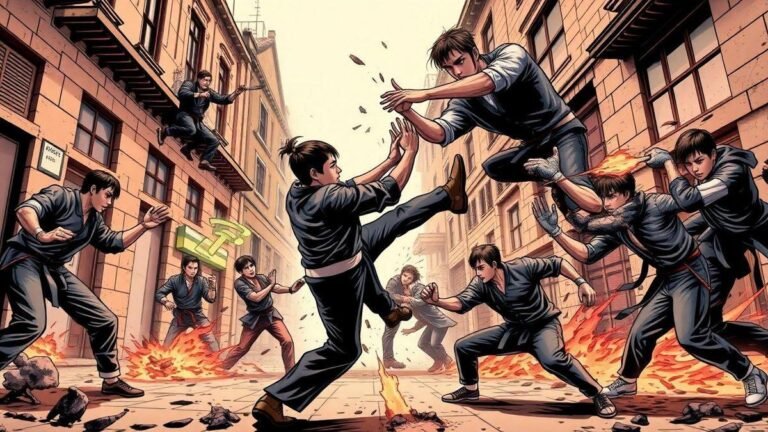From Clouds to Captions: The Interesting Evolution of Thought Balloons in Comics
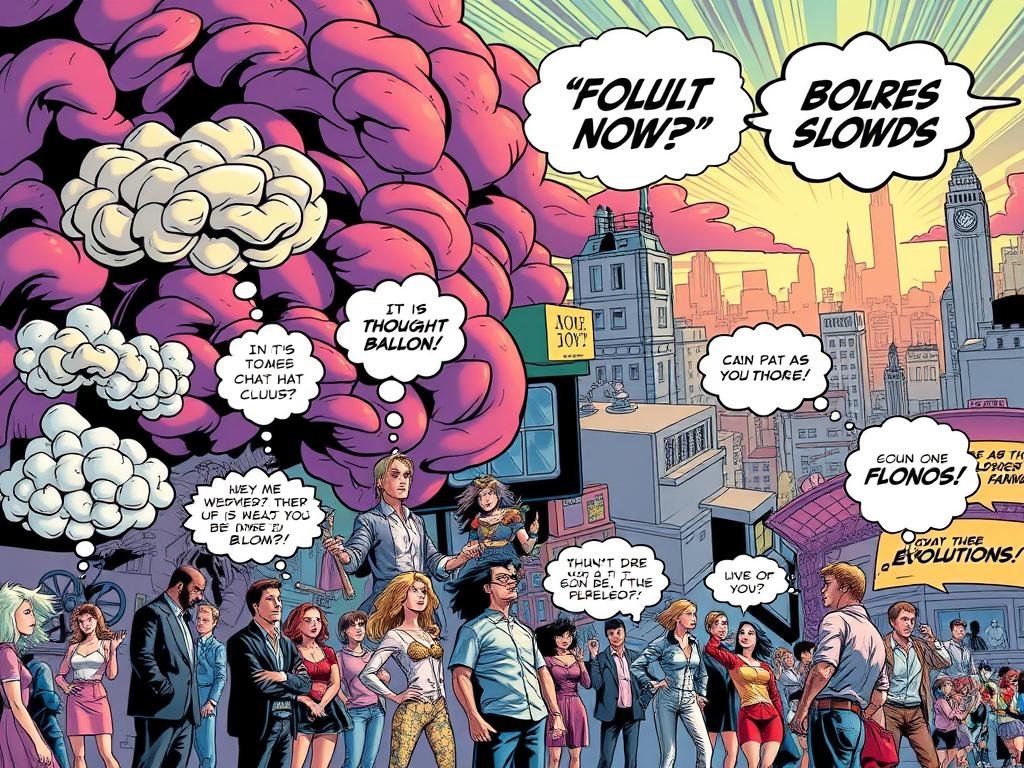
As a lifelong comic book enthusiast, I’ve always been fascinated by the magical way characters communicate through thought balloons. These seemingly simple visual elements have transformed storytelling in ways most people never notice.
Thought balloons evolution comics is more than just a design technique—it’s a profound language of visual communication.
I remember flipping through my first comic book and being captivated by those wispy clouds of text that revealed characters’ innermost thoughts. Speech representation in comics isn’t just about dialogue; it’s about understanding the hidden emotional landscape of each character.
Comics have an incredible way of bridging visual art and narrative expression. From medieval scroll texts to modern digital platforms, thought balloons have undergone a remarkable journey. They’ve become sophisticated tools that artists use to convey complex emotions, internal conflicts, and unspoken narratives.
In this exploration, I’ll take you through the fascinating world of visual storytelling, tracing how these humble graphic elements have evolved to become a crucial part of comic book language. We’ll discover how something as simple as a cloud-shaped balloon can reveal entire universes of meaning.
The Origins of Speech Representation in Comics
Diving into the fascinating world of visual communication, I’ve discovered an incredible journey of how artists began expressing dialogue long before modern comics emerged. The art of representing speech and thoughts has a rich and complex history that spans centuries of creative innovation.

Early Visual Communication Methods
Visual storytelling has deep roots in human communication. Ancient cultures developed unique ways to represent dialogue and thoughts through graphic representation. Some fascinating early methods included:
- Pictorial representations in Mesoamerican art
- Symbolic gestures in medieval manuscripts
- Graphic labels in Western art
Medieval and Renaissance Speech Scrolls
Speech scrolls emerged as a revolutionary method of visual communication during the medieval and Renaissance periods. Artists ingeniously used text-laden scrolls to convey character dialogue, creating an early precursor to modern comic book speech bubbles.
The scroll became a powerful narrative device, allowing artists to communicate complex ideas beyond visual imagery.
Transition to Modern Formats
The evolution of speech representation in comic history is a testament to human creativity. From intricate medieval scrolls to the familiar speech balloons we know today, visual communication has continuously transformed. Artists experimented with various techniques, gradually refining how characters could “speak” within their illustrated worlds.
By the 18th century, printed broadsides began incorporating more sophisticated word balloon techniques, setting the stage for the comic book formats we now recognize and love.
Thought Balloons Evolution Comics: A Historical Perspective
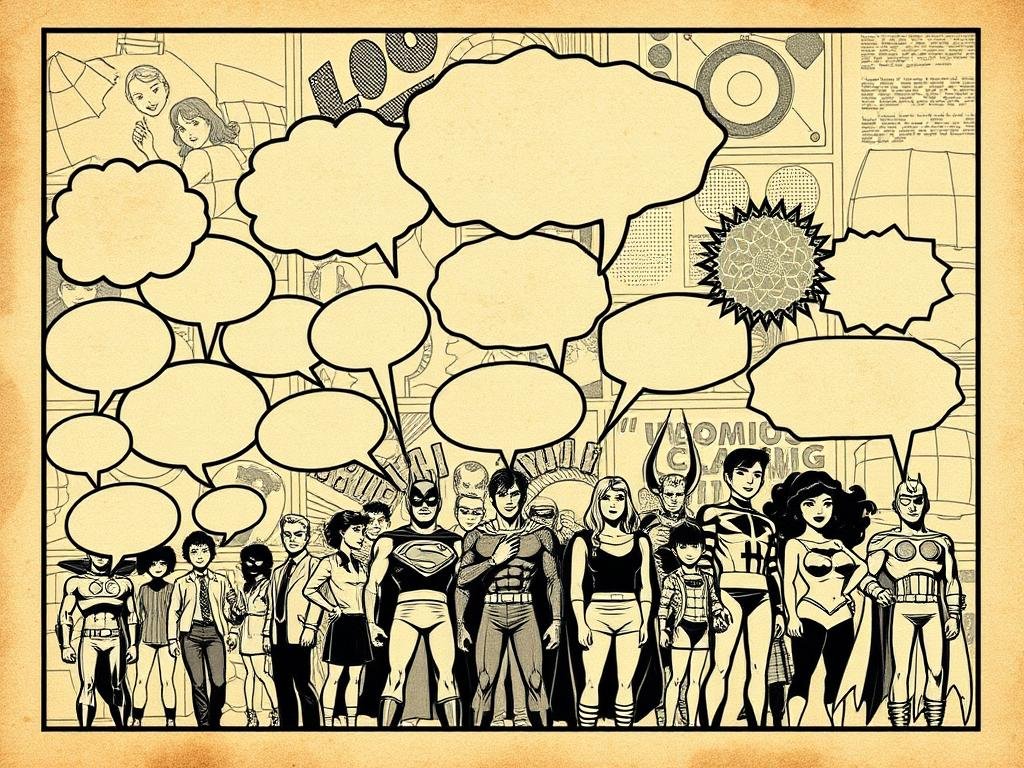
Diving into the comic book history reveals a fascinating journey of speech bubble development that transformed visual storytelling. The 20th century marked a critical period of innovation for comic art, with artists gradually refining how characters communicate through visual language.
Early comic creators experimented with various techniques to represent dialogue and inner thoughts. They explored different methods to make characters’ voices leap off the page:
- Handwritten text integrated directly into illustrations
- Decorative scrolls mimicking medieval communication styles
- Emerging standardized speech balloon designs
My research into comic book history shows how publishers played a crucial role in developing consistent visual communication standards. By the mid-20th century, speech bubble development had become a sophisticated art form, with artists using shape, line, and typography to convey emotional nuance.
Cartoonists began developing unique visual languages that went beyond simple text placement. They created:
- Cloud-like thought balloons for internal monologues
- Jagged-edged speech bubbles to represent shouting
- Whisper-thin lines to indicate quiet conversations
The evolution of speech bubbles reflects the broader artistic innovation in comic storytelling. Each line and curve became a sophisticated tool for expressing character emotion and narrative depth.
The Yellow Kid Era: Revolutionary Changes in Dialog Display
The dawn of modern comic strip communication burst onto the scene with a character that would forever change visual storytelling. Richard F. Outcault’s Yellow Kid emerged as a groundbreaking innovation in comic strip development, introducing unprecedented ways of displaying dialog and character interaction.
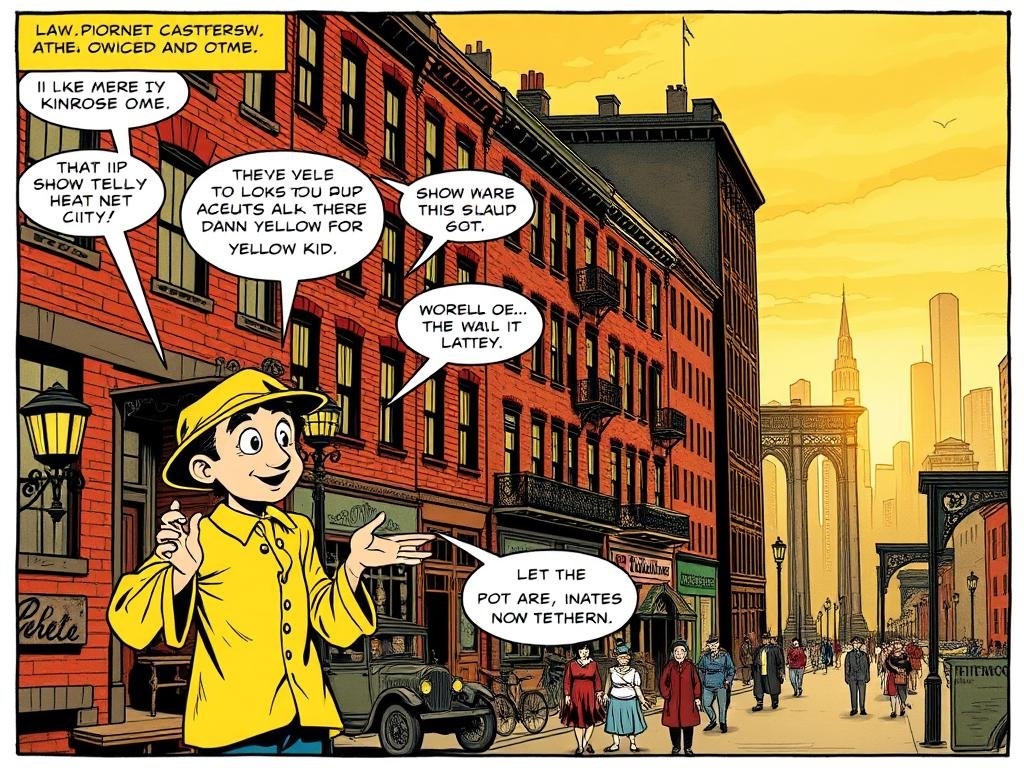
Outcault’s Yellow Kid represented a pivotal moment in comic strip history. This iconic character first appeared in the New York World newspaper, pioneering several revolutionary techniques in visual communication:
- Introducing word balloons as a standard narrative device
- Creating dynamic character dialog representation
- Transforming visual storytelling techniques
Richard F. Outcault’s Innovative Approach
The Yellow Kid comic strip broke traditional communication barriers. Outcault developed a unique method of integrating text directly into the character’s visual environment, allowing readers to experience dialog in an entirely new way.
| Innovation | Impact |
|---|---|
| Word Balloon Introduction | Standardized dialog representation |
| Character Design | Enhanced narrative storytelling |
| Typographic Placement | Created emotional context |
Impact on Comic Strip Development
My research reveals that the Yellow Kid’s approach transformed comic strip communication. Outcault’s innovative techniques became a blueprint for future comic artists, establishing fundamental principles of visual narrative that persist to this day.
“The Yellow Kid didn’t just change comics; he revolutionized how we tell stories visually.” – Comic History Quarterly
Technical Evolution of Text Display
The comic strip innovation introduced by Richard F. Outcault went far beyond simple illustration. By integrating text seamlessly with character design, he created a new language of visual communication that would influence generations of artists and storytellers.
The Golden Age of Comics and Speech Bubble Standardization
The Golden Age Comics era revolutionized visual storytelling through innovative speech bubble standards. From 1938 to 1956, comic artists developed a consistent visual language that transformed how readers experienced graphic narratives.
During this pivotal period, speech bubble design became more sophisticated. Publishers established key standards that would shape comic communication for decades:
- Standardized bubble shapes for different types of dialogue
- Consistent typography and lettering techniques
- Clear visual distinctions between character speech and thoughts
Artists like Will Eisner and Jack Kirby played crucial roles in refining speech bubble standards. They experimented with different styles that made dialogue more dynamic and expressive. Their innovations helped create a universal visual grammar that comics lovers could instantly understand.
The Golden Age Comics period saw remarkable developments in comic communication. Speech bubbles transformed from simple text containers to powerful storytelling tools that could convey emotion, tone, and character personality through their design.
“Comics are a visual medium where every line matters” – Comic Art Historian
These standardization efforts created a foundation for modern comic storytelling, ensuring that readers could seamlessly follow narratives across different publications and artistic styles.
Visual Grammar of Thought Balloons
Comics communicate complex emotions through intricate visual language. The comic visual grammar of thought balloons represents a sophisticated system of visual storytelling that goes far beyond simple text bubbles. Artists have developed nuanced techniques to represent inner thoughts, creating a rich symbolic landscape of communication.

Thought balloon symbolism involves multiple sophisticated representation methods that help readers understand characters’ internal experiences. I’ve explored the most compelling techniques used by comic artists to convey mental states.
Cloud-like Shapes and Symbolic Representations
Comic artists use distinctive visual techniques to represent thoughts:
- Fluffy cloud-like shapes for dreamy or abstract thoughts
- Jagged-edged balloons for intense or aggressive internal dialogue
- Broken or fragmented bubbles to show confusion or uncertainty
Typography as Emotional Expression
The typography within thought balloons plays a crucial role in conveying emotional nuance. Different lettering styles communicate distinct psychological states:
| Lettering Style | Emotional Meaning |
|---|---|
| Soft, rounded letters | Calm, contemplative thoughts |
| Sharp, angular text | Aggressive or frustrated internal dialogue |
| Wavering, uneven letters | Uncertainty or emotional distress |
Symbolic Representation Methods
I’ve discovered that comic visual grammar extends beyond traditional bubble shapes. Artists now use innovative techniques like chain bubbles, which connect multiple thoughts, and subtle shading to indicate psychological depth.
The thought balloon is not just a container for text, but a window into a character’s soul.
Cultural Differences in Speech Representation
Diving into the world of cross-cultural comics reveals a fascinating landscape of global speech bubbles that transcend linguistic boundaries. Each culture brings its unique visual language to comic storytelling, creating a rich tapestry of graphic communication.
Japanese manga stands out with its distinctive approach to representing dialogue and emotions. The intricate speech bubbles often reflect nuanced emotional states, using different shapes, line styles, and backgrounds to convey deeper meanings beyond simple text.
- Japanese comics use kakumoji (angular speech bubbles) to show intense emotions
- French bandes dessinées feature more elaborate, artistic speech representations
- American comics typically use more standardized, rectangular speech bubbles
European comics showcase remarkable diversity in global speech bubbles. French artists often experiment with typography and bubble shapes, turning dialogue into a visual art form that complements the narrative.
| Culture | Speech Bubble Characteristic | Unique Feature |
|---|---|---|
| Japanese | Emotional Complexity | Multiple bubble shapes |
| French | Artistic Expression | Decorative bubble designs |
| American | Clear Communication | Standardized bubble shapes |
The world of cross-cultural comics demonstrates how speech bubbles are more than just text containers. They are cultural artifacts that reflect unique storytelling traditions, visual languages, and emotional expressions across different societies.
Digital Age Transformation of Dialog Display
The digital revolution has dramatically reshaped the landscape of comic storytelling. Digital comics have emerged as a powerful medium, breaking traditional boundaries and creating new possibilities for artists and readers alike.
Web comic innovations have transformed how creators approach visual storytelling. Artists now leverage cutting-edge digital tools to craft more dynamic and interactive comic experiences.
Modern Software and Design Tools
Digital platforms have introduced sophisticated design tools that empower comic creators to push creative boundaries. Programs like Clip Studio Paint and Adobe Photoshop have revolutionized comic production:
- Advanced layering techniques
- Precise digital inking capabilities
- Customizable panel layouts
- Real-time collaboration features
Web Comics Innovation
Web comic platforms have created entirely new storytelling formats. Digital comics now feature:
- Scrolling narrative experiences
- Interactive panel transitions
- Animated dialog elements
Mobile Platform Adaptations
Mobile devices have fundamentally changed comic consumption. Creators now design specifically for smartphone and tablet screens, adapting dialog display and panel composition.
| Platform | Unique Comic Design Features |
|---|---|
| Smartphone | Vertical scrolling, compact panels |
| Tablet | Expanded visual details, pinch-zoom interactions |
| Desktop | Widescreen layouts, multi-panel views |
The digital age has transformed comics from static pages to dynamic, interactive experiences that engage readers in unprecedented ways.
Artist-Specific Variations and Innovations
Comic artists have always been masters of visual storytelling, with their unique comic artist styles transforming how we experience graphic narratives. Each creator brings a distinctive approach to innovative speech bubbles, turning simple dialogue containers into powerful narrative tools.
Some remarkable artists have pushed the boundaries of traditional communication in comics:
- Dave Sim revolutionized character dialogue in Cerebus the Aardvark with intricate text formatting
- Neil Gaiman developed complex typography in Sandman that reflected character personalities
- Bill Watterson used unconventional speech bubble shapes in Calvin and Hobbes to express emotional nuance
These artists demonstrate that speech bubbles are far more than simple text containers. They’re dynamic visual elements that can communicate mood, tone, and character depth. The way an artist designs their speech bubbles can instantly convey information about a character’s emotional state, social background, or psychological condition.
Visual communication in comics is an art form where every line and shape tells a story.
Innovative speech bubbles have become a sophisticated language of their own, allowing comic artists to transcend traditional narrative limitations and create more immersive storytelling experiences.
The Role of Typography in Emotional Expression
Comic typography transforms simple text into a powerful storytelling tool. As a comic artist, I’ve discovered that emotional lettering goes far beyond just writing words on a page. The style, shape, and size of letters can communicate intense feelings that transcend traditional dialogue.
When exploring comic typography, I’ve learned that each letter carries its own emotional language. Shaky, jagged letters can instantly convey fear or anxiety, while bold, expansive typography screams confidence and strength. Emotional lettering becomes a visual representation of character’s inner worlds.
- Thin, wispy letters suggest vulnerability
- Thick, angular letters represent aggression
- Curvy, flowing text indicates gentleness
- Fractured letterforms express psychological tension
Artists use several techniques to enhance emotional impact through typography:
- Varying letter sizes to indicate volume or intensity
- Using unique font styles that match character personalities
- Creating dynamic text layouts that reflect narrative energy
The magic of comic typography lies in its ability to speak volumes without saying a word. Each stroke, curve, and line becomes a visual emotion that resonates with readers on a deeper level.
The Psychology of Visual Dialog
Comic psychology reveals fascinating insights into how visual storytelling transforms reader engagement. When readers interact with comics, their brains perform intricate cognitive processes that go beyond simple text consumption. The unique combination of images and dialog creates a powerful psychological experience.
Visual storytelling in comics triggers multiple mental mechanisms that help readers interpret narrative content. My research explores how speech bubbles and graphic elements activate different cognitive pathways, enabling deeper emotional connections with characters and storylines.
- Spatial reasoning activated by panel layouts
- Emotional resonance through visual dialog cues
- Cognitive processing of narrative gaps
Readers unconsciously fill narrative gaps through a psychological mechanism called closure. This process allows individuals to mentally connect disparate visual elements, creating a seamless storytelling experience that engages imagination and critical thinking.
| Psychological Element | Comic Impact |
|---|---|
| Emotional Processing | Enhanced character empathy |
| Cognitive Engagement | Increased narrative comprehension |
| Spatial Reasoning | Improved visual interpretation skills |
Understanding comic psychology helps creators design more immersive visual narratives that resonate deeply with readers. By strategically employing speech bubbles, panel designs, and typographic elements, artists can craft experiences that transcend traditional storytelling boundaries.
Conclusion: The Future of Thought Balloons in Comics
The future of comics is incredibly dynamic, with evolving thought balloons representing a fascinating intersection of visual storytelling and technological innovation.
As I’ve explored throughout this article, comic artists continue to push boundaries in how characters communicate through visual narratives. The digital age has opened remarkable opportunities for reimagining traditional speech and thought representation techniques.
Research from scholars like Neil Cohn suggests that visual communication in comics will likely become increasingly interactive and immersive. Emerging platforms such as augmented reality and digital interfaces are transforming how readers experience graphic storytelling.
Evolving thought balloons now transcend static page limitations, potentially enabling real-time emotional and narrative interactions.
Digital technologies are reshaping the future of comics, allowing unprecedented creative expression. Artists can now experiment with multilayered narrative techniques, dynamic typography, and responsive design elements that were unimaginable just decades ago.
These innovations promise to make comic storytelling more engaging, personalized, and technologically sophisticated while maintaining the core visual grammar that has defined the medium for generations.
As we look ahead, one thing remains certain: thought balloons will continue to be a critical storytelling mechanism. They bridge visual and textual communication, providing readers with intimate insights into characters’ inner worlds.
The journey of comic communication is far from over—it’s entering an exciting new chapter of creative exploration.
FAQ
Q: What are thought balloons in comics?
A: Thought balloons are visual elements in comics used to represent a character’s internal thoughts or mental dialogue. They typically appear as cloud-like shapes with a series of small bubbles connecting them to the character, distinguishing them from speech bubbles that show spoken dialogue.
Q: When did thought balloons first appear in comics?
A: The origins of thought balloons can be traced back to early visual communication methods, with significant developments occurring during the late 19th and early 20th centuries. The Yellow Kid comic by Richard F. Outcault was a pivotal moment in standardizing dialog representation in comics.
Q: How do thought balloons differ across cultures?
A: Different cultures have unique approaches to representing thoughts in comics. For example, Japanese manga often uses distinct styles of thought representation compared to Western comics, with more elaborate symbolic methods and typographic variations.
Q: How has digital technology impacted thought balloons?
A: Digital technology has revolutionized thought balloons through advanced design tools, interactive web comics, and mobile platform adaptations. Artists now have unprecedented creative freedom in representing characters’ internal dialogues using sophisticated digital techniques.
Q: What role does typography play in thought balloons?
A: Typography is crucial in expressing emotion and tone within thought balloons. The style, size, and shape of letters can convey a character’s mental state, from whispers to intense thoughts, adding depth and nuance to the visual storytelling.
Q: Can thought balloons convey psychological information?
A: Absolutely! Thought balloons are powerful psychological tools that help readers understand a character’s inner world. They use visual grammar, symbolic representations, and typographic techniques to communicate complex emotional and mental states.
Q: Are thought balloons still relevant in modern comics?
A: Despite evolving technologies, thought balloons remain a vital storytelling technique. They continue to be used across various comic formats, from traditional print to digital platforms, adapting to new artistic and technological innovations.
Q: How do artists create unique thought balloon styles?
A: Comic artists develop distinctive thought balloon styles through creative typography, unique symbolic representations, and innovative visual grammar. Each artist brings their personal touch to how internal thoughts are represented, making their work distinctive.
